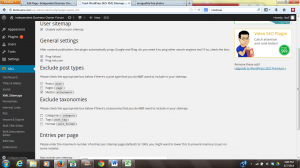So you’ve started an online business or a local business with a website and you want to start marketing it. Where to start? What are the best SEO services?
First of all marketing different kinds of businesses requires different techniques but the fundamentals remain the same.
I will cover in subsequent posts what works best in website marketing and seo for different business types. To get started I will give you the techniques I used for one business I recently started and got some amazing results with SEO. If you need more learning on what SEO entails, give this article and the resources I suggest a good read. It gives you real, by the book, SEO service that’s not just affordable, this is free SEO information. Get the top SEO tips from search engine optimization consultants that know their stuff. Join the search marketing USA revolution.
The Local Component of Achieving A Large Amount of
Traffic to Your Site
- The first step I took in getting this website ranked in Google and other search engines was to write good content for it. If your business is a pizza shop and you want to get customers from internet searches, you need to first do a little research. You can come up with some solid keyword research using the Google keyword tool – research keyword ideas. Once you have a good idea of what keywords you want to be found for online, you need to write content around those keywords. Remember, if your content doesn’t contain the words someone would type in to find you, you are not going to be found. I recommend that you include your most important keywords in the title, meta-description, page url, and title of the home page. For secondary and tertiary keywords you can write separate pages.
- At this point you should have 3 to five pages of content. For writing good seo content to get ranked in search engines, I recommend somewhere around 400-700 words per page. Now double check to make sure that the individual page urls, titles, meta descriptions all have an adequate representation of the keywords. Now, assuming you are using a content management system like WordPress ( I recommend WordPress because of the wide flexibility of plugins available for search engine optimization and other functions), you should download several plugins: an SEO plugin (pick one with high ratings), and a Sitemap building plugin. Activate these plugins, and you should find them either on the main control panel menu, or under the “tools”.
Go into your sitemap generator plugin, and generate a sitemap, making sure that the boxes for “ping Google, and Bing” are checked. You now want to locate actually website address for the sitemap. It should look something like http://www.yoursite.com/sitemap.xml. Keep this in mind, as you’ll use it later.
- Create a Google Plus account, Google Webmaster tools account, and Google analytics account. Once you create these accounts, you be given a code to put into your website header for verification purposes. If you don’t have the technical expertise to put these codes in yourself, ask a question in the comments below.
These accounts will do several things for you, the Webmaster tools account will allow you to submit your website to Google, and also to submit your sitemap that you created earlier. You should just have to past in the “/sitemap.xml” portion of the url. The analytics account will allow you to track statistics thoroughly on your site. Your Google plus account will allow you to get into the Google maps for businesses. Be sure to create a business page inside of your Google plus account and fully fill it out. Once you put your address information in, you will then have to receive a postcard in the mail to verify that address. Make sure you verify, because if you don’t, you will never end up showing up in Google maps.
Congratulations!! You just completed the first step in getting your business online. Now you are ready for the real meat and potatoes of Search Engine Optimization.



Leave a Reply
You must be logged in to post a comment.